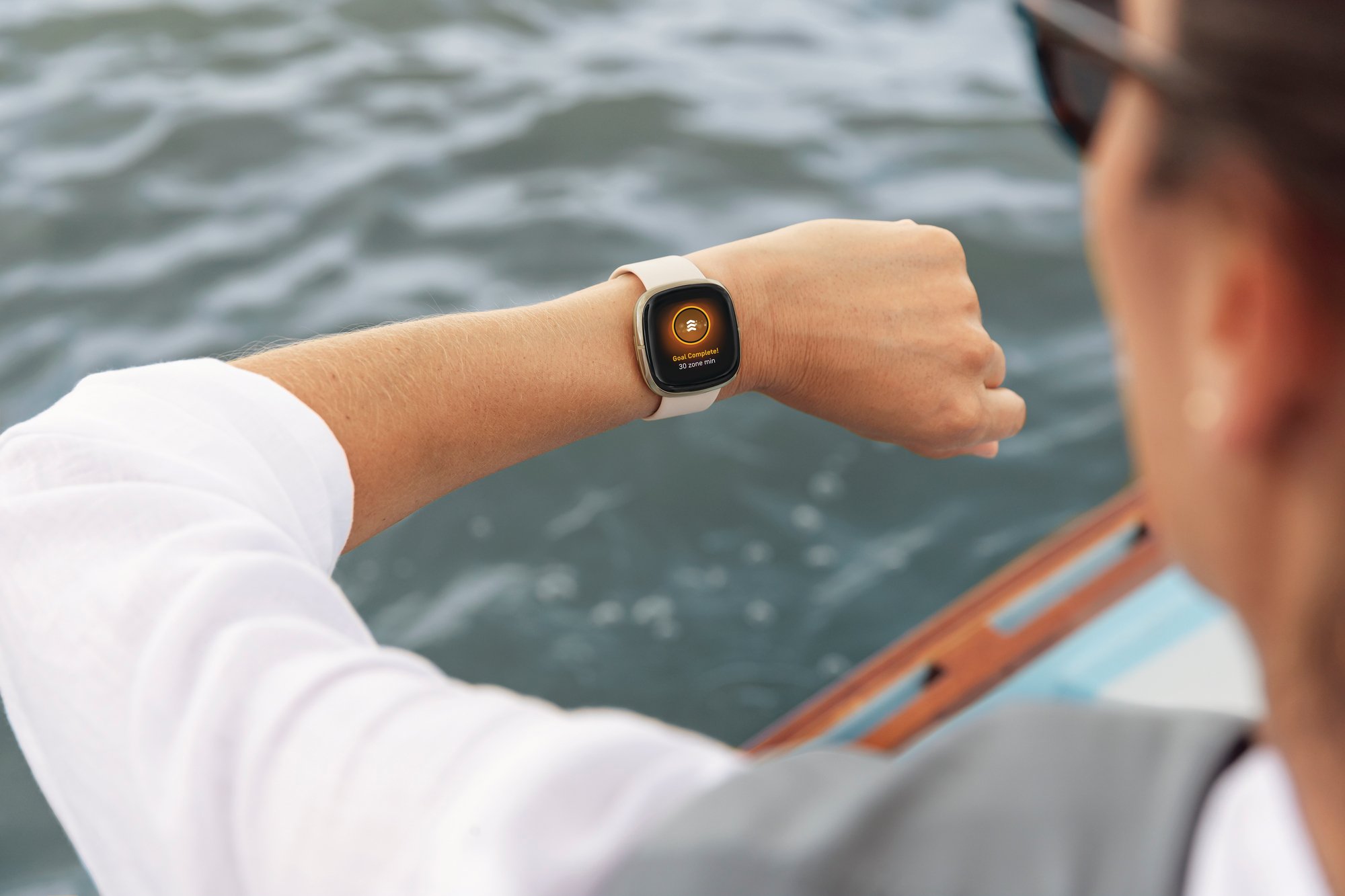The meteoric rise and epic fall of fitness tracker maker Fitbit (FIT +0.00%) occurred in less than two years. Fitbit went public in June 2015 at $20 per share, surged to nearly $50 the following month, then plummeted to about $6 today.
Investors might recall the bullet points in that story: demand initially surged as the public embraced fitness tracking devices and apps, but the market was quickly saturated with cheaper devices that crushed Fitbit's top and bottom line growth. However, investors might not know these six lesser-known facts about the company.

Fitbit's Charge 2. Image source: Fitbit.
1. The founders were inspired by the Nintendo Wii
Fitbit CEO James Park and CTO Eric Friedman co-founded Fitbit in 2007, after noticing how Nintendo's (NTDOY 3.08%) Wii combined motion sensors with software to gamify personal fitness.
Park, who felt out of shape at the time, wanted to create a fitness-tracking device priced between basic $25 pedometers and pricier sports watches. The idea initially secured $400,000 in funding from the founders' family and friends, and raised tens of millions more via official funding rounds, but the company almost failed seven times before it filed for an IPO in 2015.
2. Park and Friedman sold their previous start-up to CNET
After dropping out of Harvard, Park worked at Morgan Stanley for a year. He subsequently co-founded software firm Epesi Technologies, where Friedman served as the founding engineer. Park and Friedman subsequently co-founded Windup Labs, a digital photo sharing service which they sold to CNET in 2005.
3. It recently stopped suing Jawbone
Fitbit's first serious competitor emerged in 2011, when Jawbone launched its UP activity tracker. In 2015, Jawbone sued Fitbit for allegedly infringing its patents and stealing trade secrets by hiring its employees.
The legal clashes resulted in several patents being invalidated, then revalidated, and Fitbit gradually gained the upper hand against Jawbone. But last December, Fitbit abruptly dropped a key ITC lawsuit against Jawbone, claiming that a victory would be worthless because Jawbone was teetering on the brink of bankruptcy.
4. Why Apple really booted it from its stores
As competition from Jawbone faded, a bigger threat emerged when Apple (AAPL +0.54%) introduced the Apple Watch in late 2014. Shortly after the announcement, Apple stopped selling Fitbit devices at its brick-and-mortar and online stores.

Image source: Apple.
Many consumers probably think that Apple did that to reduce direct competition for the Apple Watch, but that was only partly true. The main reason was actually Fitbit's refusal to sync its devices to Apple's HealthKit platform, which pulls data from multiple devices and apps to a unified dashboard -- similar to Google Fit. Fitbit wanted to grow its own digital ecosystem without Apple pulling away its users, but the decision greatly reduced its exposure to Apple's customers.
5. Doctors have questioned the accuracy of its devices
A major criticism which has plagued Fitbit since its earliest days is that it isn't a certified medical device. In late 2015, oncologist Dr. Andrew Trister, who works at Sage Bionetworks, noted that many patients brought Excel spreadsheets full of fitness tracker data, but that he and other doctors had "no idea" what to do with the information since they weren't collected from certified medical devices.
In a Jan. 2016 article at iMedicalApps, Dr. Satish Misra -- a Cardiology Fellow at Johns Hopkins -- stated that he couldn't "help but wonder about risks when recommending specific, unvalidated devices" (like Fitbit trackers), and that it "would be prudent to stick to validated devices that at least have solid evidence behind them."
These arguments cast serious doubts on the growth of Fitbit's corporate wellness programs, but Fitbit's recent partnership with medical device giant Medtronic to monitor diabetic patients could boost its credibility among medical professionals.
6. It will likely buy up more wearable tech
As Fitbit runs out of room to grow, it's looking toward inorganic growth to boost its top line growth again. Over the past year, it acquired mobile payments company Coin, the assets of smartwatch maker Pebble, and high-end smartwatch maker Vector.

Vector's Luna and Meridian smartwatches. Image source: Vector.
These moves all indicate that Fitbit wants to diversify its portfolio and create more technically advanced smartwatches. However, doing so could send it on a collision course with Apple and Android Wear device makers in the high-end market -- which are all battling it out to dominate a relatively small niche market. It could also "diworsify" Fitbit's core business and cause its margins to contract -- which could be devastating to its long-term growth.







